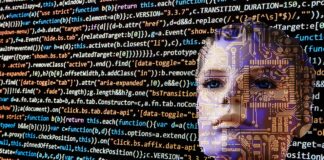Artificial Intelligence (AI) has become an essential tool in a wide range of industries, and image recognition is one of its most powerful applications. AI in image recognition is transforming how businesses, healthcare providers, security agencies, and consumers interact with visual data. From identifying objects in photos to diagnosing medical conditions from imaging scans, AI’s role in image recognition is expanding rapidly. Understanding how AI in image recognition works, its potential, and its challenges is crucial for anyone involved in industries that rely on visual data. This article explores 10 surprising things you need to know about AI in image recognition, shedding light on its impact, capabilities, and future potential.
The use of AI in image recognition is revolutionizing how we interact with visual content. By leveraging deep learning and neural networks, AI can analyze and identify patterns within images that would be difficult for humans to detect. Whether it’s recognizing faces in security footage, categorizing products for e-commerce platforms, or enhancing medical imaging for accurate diagnoses, AI in image recognition is becoming more sophisticated with each advancement. The integration of AI in image recognition is not just a technological trend but a fundamental shift in how we approach and process visual information across numerous sectors. As AI continues to evolve, the capabilities of image recognition are bound to surprise and transform industries in ways we may not yet fully comprehend.
1. AI Can Identify Objects with Incredible Precision
One of the most surprising aspects of AI in image recognition is its ability to identify objects with impressive accuracy. AI algorithms, particularly deep learning models like convolutional neural networks (CNNs), can analyze images pixel by pixel to detect specific objects, features, or patterns. These models are trained on vast datasets of labeled images, allowing them to recognize objects from different angles, lighting conditions, and even partial obstructions.
For example, AI in image recognition is already being used to identify everyday objects in photos, such as cars, animals, and products. With advancements in AI, image recognition systems are becoming so precise that they can even differentiate between similar objects with high accuracy. In retail, this means AI can automatically tag products in photos, improving search functionality for consumers. Similarly, in the medical field, AI can identify subtle differences in imaging scans that could indicate the presence of conditions like tumors or fractures.
2. AI in Image Recognition Improves Security Systems
AI-powered image recognition is rapidly transforming security and surveillance systems. One surprising application of AI in this domain is its ability to identify and track individuals across multiple camera feeds. Facial recognition technology is one of the most common uses of AI in security, enabling automated identification of people from their facial features. This technology is used in airports, government buildings, and private companies to enhance security measures.
However, AI in image recognition goes beyond just facial recognition. AI algorithms can also analyze video feeds to detect unusual behavior or events, such as theft, accidents, or intrusions. This predictive capability helps security teams respond to potential threats in real time, preventing crime or accidents before they escalate. With the rise of AI, security systems are becoming more proactive and efficient, with the ability to recognize and analyze threats faster than traditional methods.
3. AI Can Enhance Customer Experience in E-Commerce
In e-commerce, AI in image recognition is providing surprising ways to improve the customer experience. AI can be used to analyze product images and recommend similar items to customers based on their preferences. This is known as visual search technology, which allows users to upload photos of items they’re interested in, and AI will automatically find similar products available for purchase.
Moreover, AI can help businesses optimize their product categorization. By automatically tagging and classifying products based on images, AI makes it easier for customers to find what they are looking for. This not only streamlines the shopping experience but also enhances the accuracy of search results, leading to higher conversion rates and customer satisfaction.
4. AI in Image Recognition is Revolutionizing Healthcare
One of the most surprising areas where AI is making a significant impact is in healthcare, specifically in medical imaging. AI’s ability to analyze complex medical images, such as MRIs, CT scans, and X-rays, is revolutionizing diagnostics. AI in image recognition can detect anomalies in medical images with a level of precision that rivals, and in some cases surpasses, human experts.
For example, AI algorithms can be trained to recognize early signs of diseases like cancer, enabling faster diagnosis and treatment. By analyzing patterns in medical images, AI can also assist radiologists in identifying fractures, tumors, or infections that may be difficult to spot with the naked eye. In some cases, AI-driven image recognition has been found to outperform human doctors, making it a powerful tool in medical diagnostics.
5. AI in Image Recognition Enhances Augmented Reality (AR)
Another surprising application of AI in image recognition is its integration with augmented reality (AR) technology. AR overlays digital content on the real world, and image recognition plays a crucial role in enabling this interaction. By using AI to recognize and understand the objects in the environment, AR systems can accurately place digital content in real time.
For instance, in retail, AI-powered image recognition can allow customers to virtually try on clothes or accessories by recognizing their body shape and size through a smartphone or tablet camera. Similarly, in home design, AR apps can recognize furniture and home decor items, allowing users to visualize how new pieces will look in their homes. This integration of AI and AR is transforming the way consumers interact with products and making the shopping experience more immersive and personalized.
6. AI Improves Accessibility for the Disabled
AI’s image recognition capabilities are also being used to improve accessibility for people with disabilities. One surprising application is in assistive technologies for the visually impaired. AI-powered image recognition can describe objects, text, and scenes in real-time, helping individuals navigate their environments more independently.
For example, smartphone apps can use AI to recognize objects or text and provide verbal descriptions to users. This technology is making it easier for people with visual impairments to interact with the world around them and access information that might otherwise be inaccessible. AI is making significant strides in helping to bridge accessibility gaps and empower people with disabilities.
7. AI Can Detect Deepfakes and Fake News
As the quality of AI-generated content improves, so does the need for AI-powered image recognition to detect deepfakes and fake news. Deepfakes are manipulated images or videos that use AI to alter facial expressions or voices, creating realistic but fake content. While deepfakes have gained attention for their potential misuse in spreading misinformation, AI in image recognition can help detect these alterations.
AI algorithms can analyze images and videos to identify inconsistencies, such as unnatural movements, distorted facial features, or irregular lighting, that may indicate tampering. This ability to detect fake media is becoming an essential tool for journalists, law enforcement, and platforms like social media to combat the spread of disinformation. As the technology evolves, AI’s role in fighting fake news and protecting the integrity of digital content will become even more important.
8. AI is Redefining Art and Creativity
AI in image recognition is also making waves in the art world. AI algorithms can analyze and understand the style, technique, and composition of works of art, enabling them to create new pieces in similar styles. AI-powered tools are already being used by artists and designers to generate novel artwork or assist with creative projects.
Moreover, AI can help museums and galleries better catalog and display their collections. By automatically tagging and categorizing images of artwork, AI makes it easier for curators to manage vast collections and make them more accessible to the public. This intersection of AI and creativity is expanding the possibilities of what art can be and how it is experienced.
9. AI in Image Recognition Can Improve Manufacturing
In manufacturing, AI in image recognition is improving quality control processes. AI systems can be used to inspect products on production lines, identifying defects or inconsistencies that human workers may miss. Whether it’s identifying damaged components, faulty wiring, or cosmetic imperfections, AI’s ability to analyze images at high speed and with high precision is streamlining manufacturing operations.
In addition, AI-driven image recognition is used for predictive maintenance in factories. By analyzing images of machinery or equipment, AI can predict when maintenance is needed or when a part is likely to fail, preventing costly downtime and ensuring smooth operations. This proactive approach to maintenance is improving productivity and reducing operational costs across industries.
10. AI in Image Recognition Will Continue to Evolve
Perhaps the most surprising aspect of AI in image recognition is that its capabilities are still evolving. With advances in deep learning, computer vision, and neural networks, AI is becoming increasingly capable of understanding complex images and providing more accurate and nuanced interpretations.
In the future, AI in image recognition will be able to analyze not just visual data but also the context in which it appears, making its predictions even more sophisticated. As AI systems become more advanced, their ability to interact with the physical world, understand human behavior, and offer insights will continue to grow. This evolution will have profound implications for industries ranging from healthcare to entertainment to security, and the possibilities seem virtually endless.
Conclusion
AI in image recognition is transforming the way we interact with the world around us, and its applications are more surprising and far-reaching than many realize. From enhancing security systems and improving healthcare diagnostics to creating more immersive shopping experiences, AI is revolutionizing how we process and understand visual data. As the technology continues to evolve, its potential for reshaping industries will only increase. Whether you are a business owner, a healthcare professional, or a consumer, understanding the implications of AI in image recognition will be key to staying ahead of the curve and unlocking new opportunities in an AI-driven world.














